Sights and Activities
Below are the places we saw and activities completed while visiting France:
Paris
Arc de Triomphe: standing in the middle of the world’s largest traffic roundabout, Place de l’Étoile , officially known as Place Charles de Gaulle, the ‘triumphal arch’ was commissioned in 1806 by Napoleon to commemorate his victories, but remained unfinished when he started losing battles, and was not completed until 1836.
Avenue des Champs Elysees: we strolled along this famous avenue known for its theatres, outdoor cafes, and luxury shops.
Place de la Concorde: one of Paris’ major public square, famous 3300-year-old pink granite obelisk from Egypt.
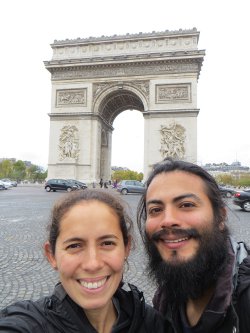
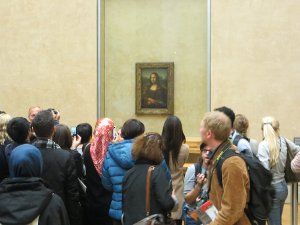
Musee de Louvre: the museum is hosted in the Palais du Louvre which was constructed as a fortress by Philippe-Auguste in the 13th century and rebuilt in the mid-16th century for use as a royal residence. In 1793, the Revolutionary Convention transformed it into the nation’s first national museum. The museum’s main entrance is covered by the iconic 21m-high Pyramide du Louvre, a glass pyramid designed by the Chinese-American architect IM Pei. We spent an evening admiring great work of art. The highlights included Da Vinci’s Mona Lisa, Michaelango’s Venus, and all the Egyptian art.
Centre Pompidou: we viewed this building from the exterior that is designed “inside-out.” Opened in 1977, it hosts the Musée National d’Art Moderne.
Cathedrale de Notre Dame de Paris: the heart of Paris, this masterpiece of French Gothic architecture contains stunning stained-glass rose windows, elegant flying buttresses, and towers. Completed in 1345, the catholic cathedral is located on an island, Ile de la Cite.
Place de la Bastille: the previous location of a notorious prison that was demolished by a revolutionary mob on July 14, 1789. The place (square) where the prison once stood is now a busy traffic roundabout with a 52m-high Colonne de Juillet (July Column) that was erected in memory of Parisians killed during the July Revolution of 1830.
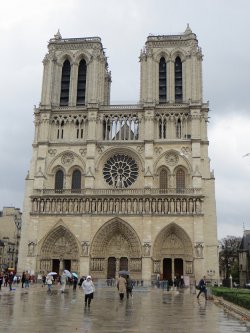
Les Catacombes: former underground rock mine, turned into one of three underground cemeteries created in the late 18th century to solve the problems posed by Paris’ overflowing cemeteries. The underground cemetery contains many bones piled up and in some cases decorated in artistic fashion.
Palais et Jardins du Luxembourg: we relaxed for a few minutes in these lovely gardens located in front of the palace. The palace was built for Marie de Médicis, Henri IV’s consort, and now houses the Senate.


Pantheon: completed in 1789, the Pantheon houses the tombs of Voltaire, Jean-Jacques Rousseau, Victor Hugo, Émile Zola, Jean Moulin, and Nobel Prize winner Marie Curie, among many others, in its crypt.
Eglise St Sulpice: this Italianate church was built between 1646 and 1780. The façade is designed by a Florentine architect.
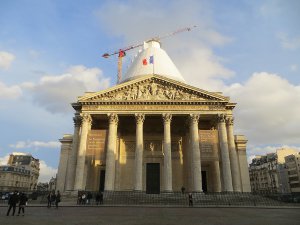
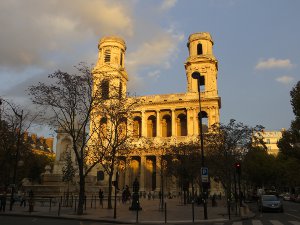
Eglise St German des Pres: Paris’ oldest church, this 11th-century Romanesque was the dominant church in Paris until the arrival of Notre Dame.
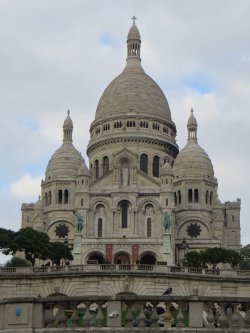
Isle du St Louis: this small, residential island, located adjacent to the bigger and more touristy island of Ile de la Cite, contains a few boutiques and restaurants. The area around Pont St-Louis, the bridge across to Ile de la Cite, and Pont Louis Philippe, the bridge to the Marais, is known as one of the most romantic spots in Paris. Bridges in this area contain locks left by many couples to symbolize their eternal love.
Basilique du Sacre Coeur: the hike up to this white-domed Basilica of the Sacred Heart of Paris was worth the spectacular city views. Located on Montmartre, the city’s highest point, the construction of the basilica began in 1875 and was finished in 1914.
Eiffel Tower: we viewed this magnificent structure at sunset and we were able to see it glow at night. Paris’ famous icon was built for the 1889 World Fair. The tower was almost torn down in 1909 and was only saved by the new science of radiotelegraphy. Named after its designer, Gustave Eiffel, the tower is 324m high, including the TV antenna at the tip, and contains 7300 tons of iron.

Bordeaux
Basilica of St. Michael: a gothic church built between the end of 14th century and the 16th century has a separate bell tower (Fleche St Michel), which is 114 meters tall and built in the 15th century.
Porte Cailhau: this antique gate leads into Old Bordeaux and was listed as a historical monument in 1883.
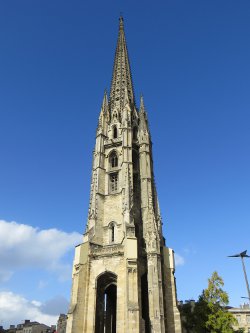

Cathedrale St Andre: this Unesco listed cathedral is overshadowed by the 50m-high Gothic tower, Tour Pey-Berland. It was erected between 1440 and 1466, and its spire was later topped off with the statue of Notre Dame de l’Aquitaine.
Grosse Cloche: this “Great Bell” was the tower of the old town hall and was listed as a historical monument in 1886.
Grand Theater: first inaugurated on April 17, 1780, it was designed by the architect Victor Louis.
Marche des Capucins: we enjoyed the colors of this daily, open-air market of fruits and vegetables where we had a scrumptious seafood platter top off with a Bordeaux wine.

Metamorphoses by Georges Rousse: we attended this amazing exhibition located in a former Nazi submarine bunker. The displays were photographs and installations of geometric shapes painted in rooms with interesting perspectives.

